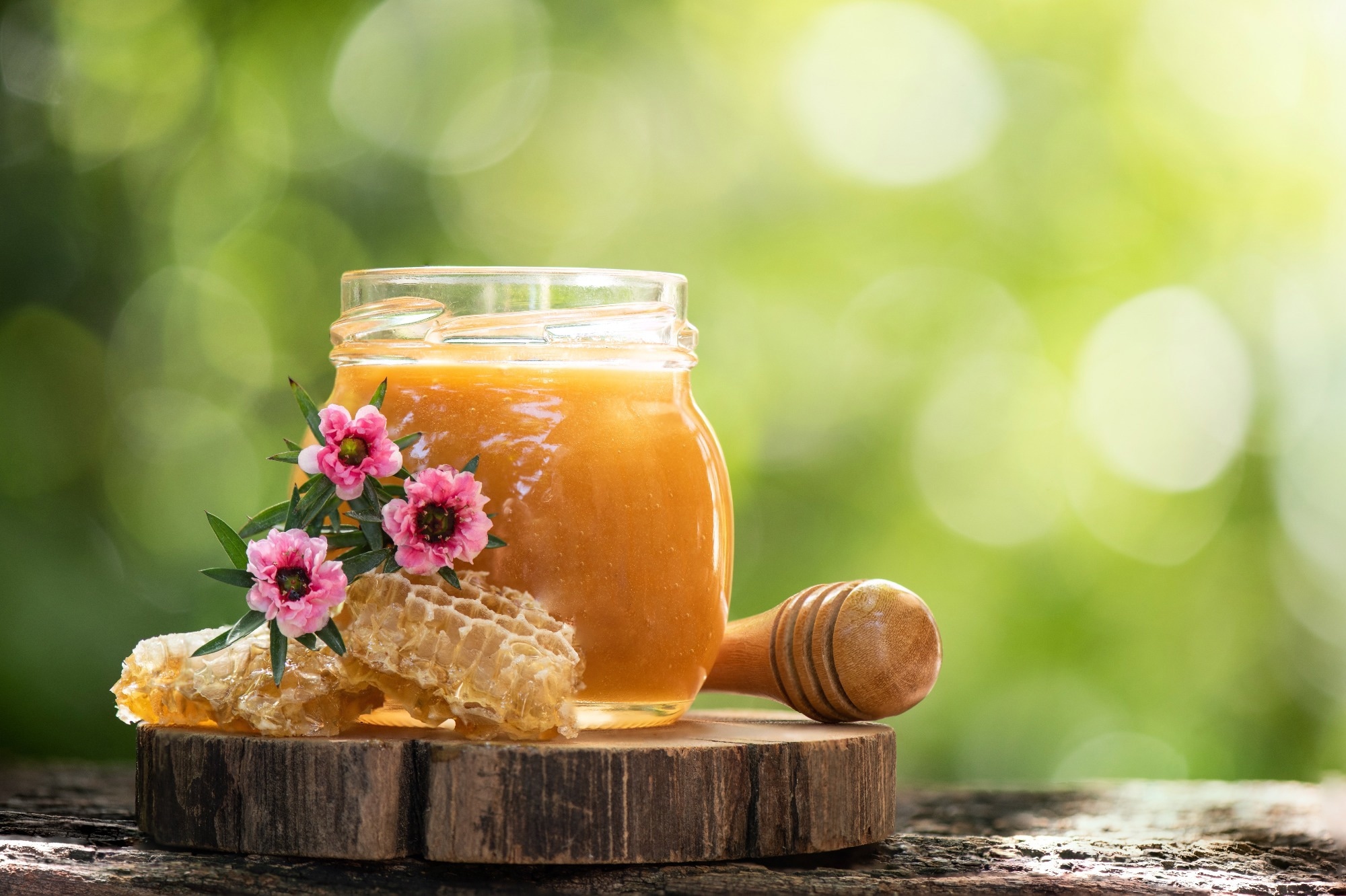The rise of antibiotic resistance poses a significant threat to the global control of infectious diseases, which has led researchers around the world to investigate the efficacy of both natural and synthetic antibiotics. Honey is known to be antibacterial; however, little is known about whether storage time affects its potency.
 Study: Antibacterial activity of Hungarian varietal honeys against respiratory pathogens as a function of storage time. Image Credit: wasanajai / Shutterstock.com
Study: Antibacterial activity of Hungarian varietal honeys against respiratory pathogens as a function of storage time. Image Credit: wasanajai / Shutterstock.com
The threat of respiratory infections
Respiratory infections are often caused by resident bacterial flora, particularly Streptococcus and Hemophilus, that become pathogenic when the host immune system is weakened. The formation of biofilms is a common phenomenon with 80% of bacterial infections, which causes resistance to host immune responses and antibiotics, as well as tolerance to adverse environmental conditions.
The biofilm implies both a specific metabolic profile in the component cells and a structure that resists permeability to drugs. Extracellular polysaccharides (EPS) are key to the structure of biofilms, as they form a matrix within which bacteria are embedded. The matrix channels allow the bacteria to communicate with each other through metabolite transfer and exchange resistance genes with each other.
During infection, Pseudomonas aeruginosa, for example, covers the respiratory surface with a biofilm, thereby reducing available breathing area and ultimately allowing other Gram-negative organisms to proliferate.
The antibacterial effects of honey
Honey is a natural product synthesized by bees from the nectar of various flowers. Previous studies have reported the ability of honey to prevent biofilm formation, which could make it useful in treating respiratory infections.
Honey contains glucose oxidase, an enzyme produced in the bee pharyngeal gland, which converts glucose into another compound with hydrogen peroxide (H2O2) as the byproduct. The exception is manuka honey, which lacks H2O2.
H2O2, which ranges from 15-50% in honey products, is primarily responsible for honey's antibacterial effects. Over time, the enzyme catalase breaks down H2O2 to water and oxygen, thereby causing a loss of antibacterial activity, as glucose oxidase activity also decreases with storage.
When honey is applied to a biofilm, its active ingredients destroy the film and inhibit bacterial adhesion, thus preventing its ability to re-form. Other characteristics of honey, including its high sugar content, defensin-1 activity, and polyphenols, have also been attributed to its anti-biofilm activity.
Medical-grade honey has been defined to ensure that consumers do not become infected or poisoned by various biological and chemical compounds. The current study examined the effect of storage duration, geographical origin, and plant of origin on the antibacterial activity of four Hungarian varieties of honey.
Black locust/acacia (Robinia pseudo-acacia), goldenrod (Solidago gigantea), linden (Tilia spp.), and sunflower (Helianthus annuus) honey were purchased from the same Hungarian apiaries between 2020 and 2022. All honey products were tested in 2022 for their physical, chemical, and antibacterial characteristics.
What did the study show?
The color of honey varies from white to black, covering pale yellow and red. The fresh black locust honey had a pale yellowish-green color, which darkened with extended storage time. This darkening was observed for all varieties, most obviously with sunflower honey.
The greatest difference in color was observed in honey stored for two years as compared to that stored for one year. The subsequent two years of storage did not cause any apparent change in smell or texture.
The black locust honey was the most acidic variety, while the highest pH was found in linden honey. Electrical conductivity was lowest in black locust honey, whereas goldenrod had the highest electrical conductivity. Neither of these characteristics changed over time.
Antibacterial activity was measured by minimum inhibitory concentration (MIC) and minimum bactericidal concentration (MBC) values. A membrane degradation assay and scanning electron microscopy (SEM) were also used to examine honey's inhibitory activity on biofilm.
With increased storage time, higher honey concentrations in solution were needed for the same inhibitory effect. This increase was observed from 10-18% for samples obtained in 2022 to 43-50% for the older 2020 samples.
Linden and sunflower had the highest inhibitory effect, compared to black locust honey, which had the least. The greatest and least antibacterial activity was observed against Hemophilus and P. aeruginosa strains, respectively.
The 2022 samples inhibited biofilms against Hemophilus strains as high as 80%, compared to 70% for goldenrod and black locust honey. This activity declined to 45-53% after one year of storage.
Linden honey was the most active in membrane degradation at 60% or higher concentrations in the older samples. However, this activity declined to 40% and 20% in the 2021 and 2022 samples, respectively.
In 2022 samples, almost 45% of pneumococcal cells were lysed. Despite a 25% reduction in the antibiofilm activity of linden honey, this aged honey remained 60% active against all tested bacteria at one year.
Our results suggest that the strong antibacterial effect of linden honey is partially attributable to the non-peroxide factor(s).”
With cell lysis, DNA release began as early as 20 minutes with the newest samples and was delayed to 60 minutes with the 2020 samples. These results were confirmed with SEM, which demonstrated the destruction of cells exposed to linden honey accompanied by an expulsion of their contents.
Conclusions
The study findings demonstrate that honey loses some of its antibacterial activity against both Gram-positive and Gram-negative respiratory pathogens when stored for one or two years.
The color also darkens with storage, with the final color depending on the type of honey rather than its initial color. Linden was particularly strong in its inhibitory potential against both Gram-positive and Gram-negative bacteria.
These different results show that the structure of the bacteria may play a smaller role in the development of resistance, rather the specific defense mechanisms of each strain are decisive.”
Journal reference:
- Nagy-Radvanyi, L., Balazs, V. L., Kocsis, B., et al. (2024). Antibacterial activity of Hungarian varietal honeys against respiratory pathogens as a function of storage time. Scientific Reports. doi:10.1038/s41598-024-60961-3.